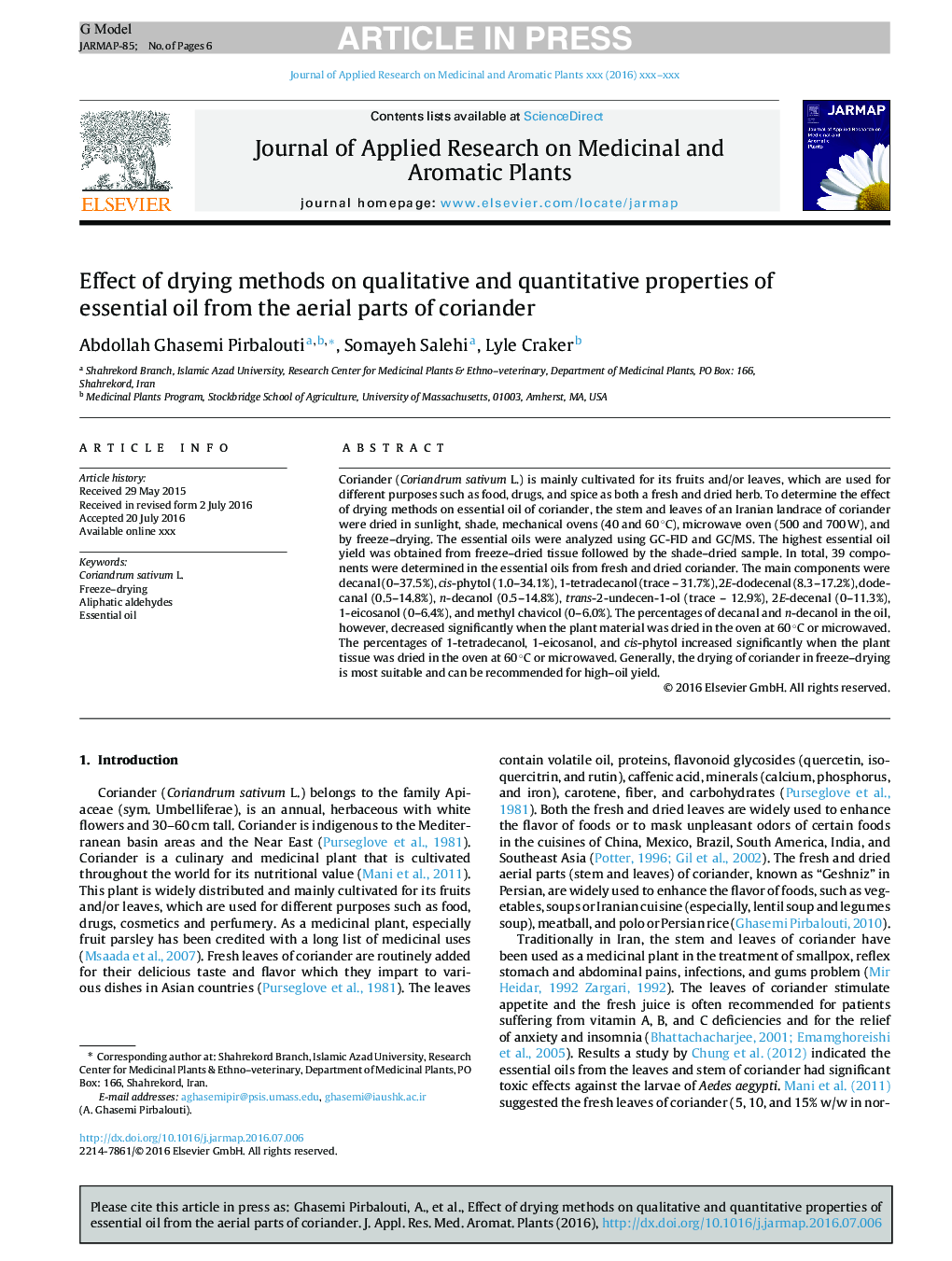| Article ID | Journal | Published Year | Pages | File Type |
|---|---|---|---|---|
| 5635214 | Journal of Applied Research on Medicinal and Aromatic Plants | 2017 | 6 Pages |
Abstract
Coriander (Coriandrum sativum L.) is mainly cultivated for its fruits and/or leaves, which are used for different purposes such as food, drugs, and spice as both a fresh and dried herb. To determine the effect of drying methods on essential oil of coriander, the stem and leaves of an Iranian landrace of coriander were dried in sunlight, shade, mechanical ovens (40 and 60 °C), microwave oven (500 and 700 W), and by freeze-drying. The essential oils were analyzed using GC-FID and GC/MS. The highest essential oil yield was obtained from freeze-dried tissue followed by the shade-dried sample. In total, 39 components were determined in the essential oils from fresh and dried coriander. The main components were decanal (0-37.5%), cis-phytol (1.0-34.1%), 1-tetradecanol (trace - 31.7%), 2E-dodecenal (8.3-17.2%), dodecanal (0.5-14.8%), n-decanol (0.5-14.8%), trans-2-undecen-1-ol (trace - 12.9%), 2E-decenal (0-11.3%), 1-eicosanol (0-6.4%), and methyl chavicol (0-6.0%). The percentages of decanal and n-decanol in the oil, however, decreased significantly when the plant material was dried in the oven at 60 °C or microwaved. The percentages of 1-tetradecanol, 1-eicosanol, and cis-phytol increased significantly when the plant tissue was dried in the oven at 60 °C or microwaved. Generally, the drying of coriander in freeze-drying is most suitable and can be recommended for high-oil yield.
Related Topics
Life Sciences
Agricultural and Biological Sciences
Agricultural and Biological Sciences (General)
Authors
Abdollah Ghasemi Pirbalouti, Somayeh Salehi, Lyle Craker,
